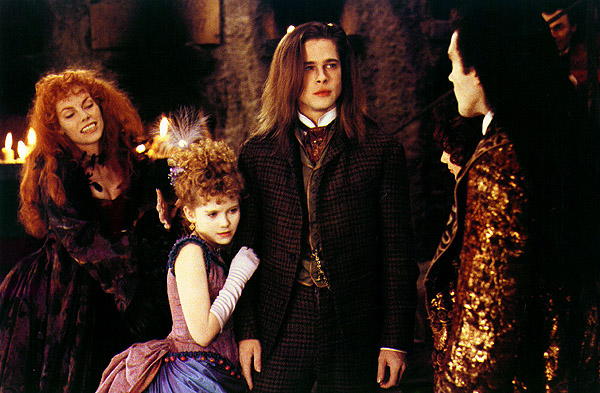
My title, taken from the film version of the first Vampire Chronicle, points to a common reading of the chronicles themselves. Louis Pointe du Lac is depressive as a result of his inability to square his human feelings with his vampire existence. Lestat represents the opposite extreme: a heroic drive towards full realization of his vampire nature.
However, the major parameters of all Rice’s vampires in fact bear a remarkable resemblance to symptoms of clinical depression. We might list the most applicable of these as:
Major and Chronic Depression
• feelings of hopelessness
• diminished interest or pleasure
• too much or too little sleep
• feelings of worthlessness or guilt
• low self-esteem
• poor appetite or overeating
• poor concentration or inability to
• make decisions
• thoughts of death or suicide
Bipolar (manic) Depression (manic phase)
• over activity
• increased talkativeness or pressure of speech
• flight of ideas or racing thoughts
• inflated self-esteem or grandiosity
• decreased need for sleep
• distractibility
• indiscreet behaviour with poor judgement
These lists are an amalgam of diagnostic criteria, as quoted by Lewis Wolpert, to be found in DSM – IV (Diagnostic and Statistical Manual of Mental Disorders, 4th ed.) I have also been somewhat selective. Not all symptoms need to be simultaneously present for a positive diagnosis. Whilst the first list seems to apply most consistently to Louis, and in a different way to Armand, Lestat frequently meets all the criteria of list two. He moreover experiences the depressive phase when he “goes underground”.
Drawing mainly on the earlier chronicles, my paper shows these symptoms to be distributed amongst Rice’s entire cast. The question is not, then, whether any one vampire may be successfully diagnosed as depressive according to DSM – IV. It is rather two questions: whether Rice’s version of vampirism itself represents the depressive state and what implications may we derive from this for our reading of the narrative. Significant here is the continuity between the characters’ vampire and mortal identities; the difference being that their vampire selves appear within the context of an eternity that mirrors the seemingly interminable perspective of the depressive episode. Little wonder, then, that older vampires frequently despair and end their own existence.
Peter Remington – Dept. of Radio TV and Film, Communications Faculty, Eastern Mediterranean University, Gazimagusa, Northern Cyprus.








